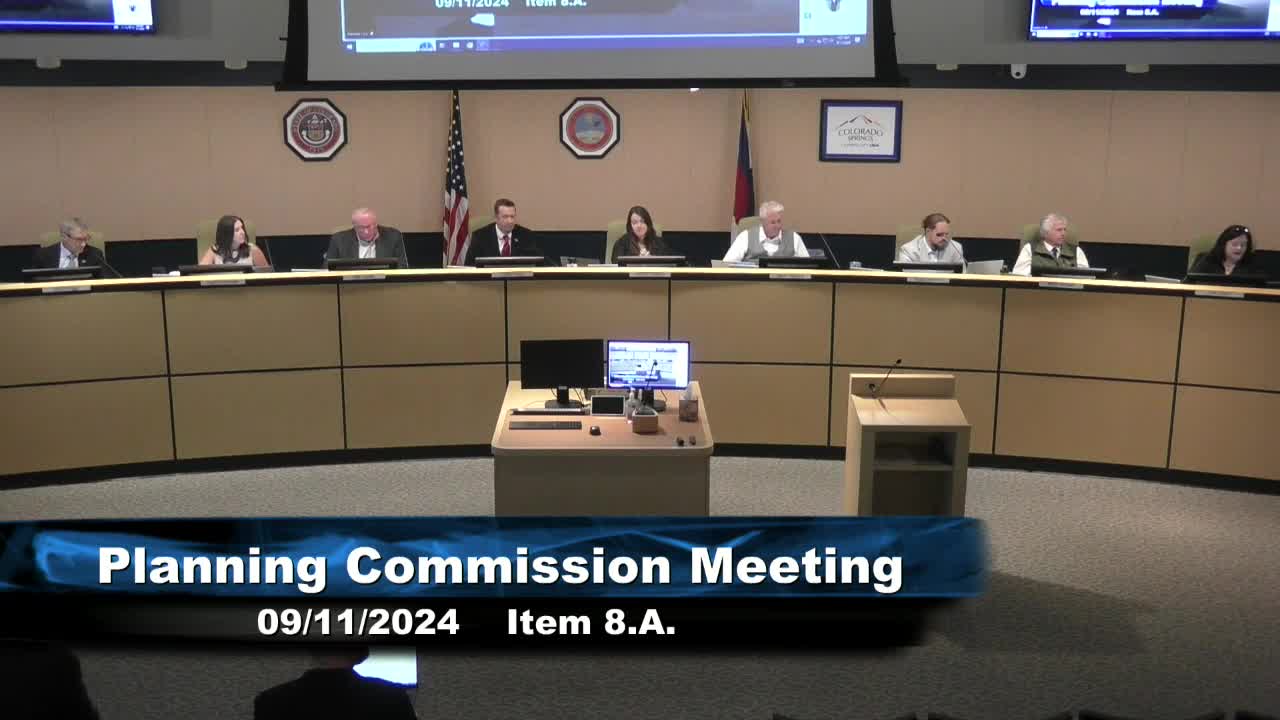Urban renewal plan aims to transform blighted Colorado Springs area
September 11, 2024 | Colorado Springs City, El Paso County, Colorado
This article was created by AI summarizing key points discussed. AI makes mistakes, so for full details and context, please refer to the video of the full meeting. Please report any errors so we can fix them. Report an error »

In a recent government meeting, officials discussed the future of an urban renewal district located at the southeast corner of Colorado Springs, which is adjacent to a rail spur and has an approved development plan for higher density multifamily residential housing. While construction has yet to begin, the area is poised for significant development, including a focus on affordable and attainable housing.
The developer has committed to providing 380 units aimed at low-income and workforce housing, with 23% of the units designated as affordable. These units will cater to individuals earning between 70% and 110% of the area median income (AMI), with an average under 90% AMI. Notably, the project will also feature 100% ADA accessibility, making it one of the first of its kind in the state.
A key point of discussion was the integration of the development with the Legacy Loop trail, which aims to enhance connectivity in the area. While the developer has expressed interest in contributing to the Legacy Loop, there are currently no financial plans in place to fund these improvements through the urban renewal authority (URA).
Concerns were raised regarding the blighted designation of the area, with some officials questioning the accuracy of the conditions reported in a recent survey. They argued that the conditions were overstated and did not reflect the actual state of the roads or the presence of illegal dumping. The blight designation is crucial as it allows for the potential redevelopment of the area, but it ultimately requires city council approval.
The meeting also touched on the challenges faced by previous urban renewal efforts in the same footprint, which had stalled due to financial issues and market conditions. Officials emphasized the importance of learning from past experiences to ensure the success of the current project.
In conclusion, the discussions highlighted a commitment to affordable housing and urban renewal in Colorado Springs, while also addressing the complexities of development, community needs, and the importance of accurate assessments of urban conditions. The future of the urban renewal district remains contingent on city council decisions and the successful integration of community amenities.
The developer has committed to providing 380 units aimed at low-income and workforce housing, with 23% of the units designated as affordable. These units will cater to individuals earning between 70% and 110% of the area median income (AMI), with an average under 90% AMI. Notably, the project will also feature 100% ADA accessibility, making it one of the first of its kind in the state.
A key point of discussion was the integration of the development with the Legacy Loop trail, which aims to enhance connectivity in the area. While the developer has expressed interest in contributing to the Legacy Loop, there are currently no financial plans in place to fund these improvements through the urban renewal authority (URA).
Concerns were raised regarding the blighted designation of the area, with some officials questioning the accuracy of the conditions reported in a recent survey. They argued that the conditions were overstated and did not reflect the actual state of the roads or the presence of illegal dumping. The blight designation is crucial as it allows for the potential redevelopment of the area, but it ultimately requires city council approval.
The meeting also touched on the challenges faced by previous urban renewal efforts in the same footprint, which had stalled due to financial issues and market conditions. Officials emphasized the importance of learning from past experiences to ensure the success of the current project.
In conclusion, the discussions highlighted a commitment to affordable housing and urban renewal in Colorado Springs, while also addressing the complexities of development, community needs, and the importance of accurate assessments of urban conditions. The future of the urban renewal district remains contingent on city council decisions and the successful integration of community amenities.
View full meeting
This article is based on a recent meeting—watch the full video and explore the complete transcript for deeper insights into the discussion.
View full meeting
